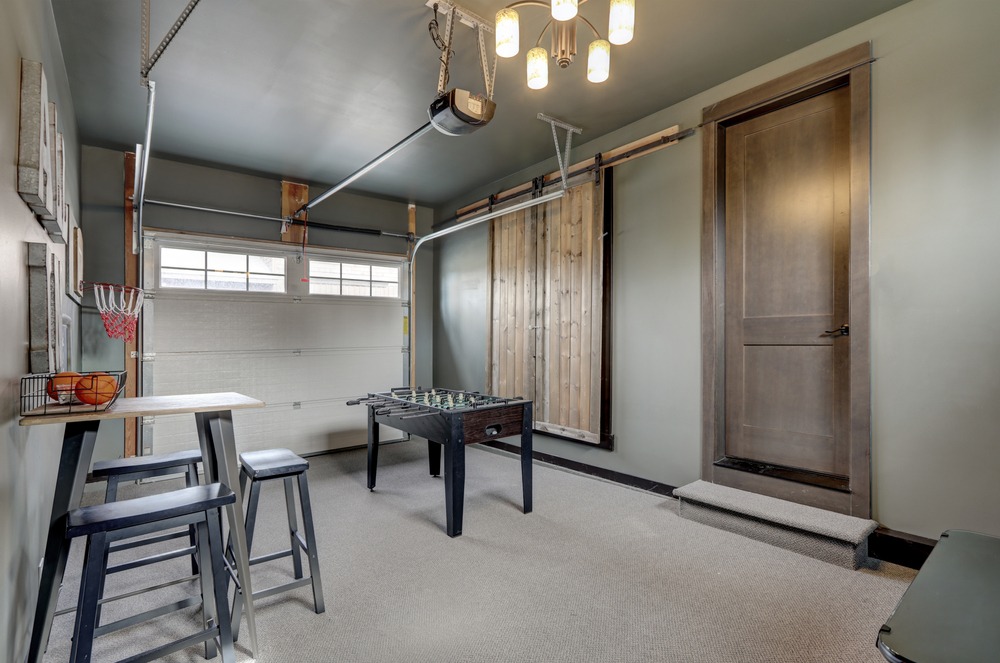Nowadays, many people stopped using their garage as a parking spot for their car only – instead, they often transform it into playrooms, entertainment rooms, studios, or even home gyms.
Since the garage is often being repurposed, keeping it warm during the winter becomes of even higher importance.
Unfortunately, garage door repair experts agree that with rising energy costs, and more homeowners seeking ways to keep those costs down and make their homes more energy efficient, the one area that is often overlooked is the garage.
There are several ways to heat it during winter – which of them will be the best way to heat a particular garage is an individual matter, and mainly depends on how your garage is built and what it is made of.
However, one thing is important in all of them – it needs to be done safely.
Here are a few of the safest methods of heating your garage during the wintertime:
Forced Air Heater
One of the options you have is installing a forced-air heater.
Depending on the garage’s size, you can opt for a 45.000 Btu size (two-car garage), or 60.000 Btu size (for three-car garage).
Forced air heaters usually use either natural or LP gas, which means that if you decide to install it, you have to place it somewhere close to the gas line.
Another thing that you have to keep in mind is that warm air rises, which means that the closer to the ceiling, the warmer air gets – unfortunately, once the garage door opens, there is a chance that the warm air will leave it.
Also, if the garage is where you are doing some woodworking projects, then this solution is not for you, as the moving air can pick up the dust and the particles.
Infrared Heater
When it comes to infrared heaters, there are both gas and electric models available on the market – no matter which you chose, both will safely heat your garage during winter.
Keep in mind that you should avoid ‘high intensity’ models, as they are often not approved for residential installation – instead, choose a ‘low intensity’ one.
Contrary to the forced air heaters, an infrared heater does not blow the air – it radiates it, which means that it can quickly heat objects placed in its vicinity.
Because of that, you should keep all the objects in your garage at least 4 feet from the heater.
Since both the walls and the floor will absorb the heat it creates, you will feel as if the warmth was coming from every place in the garage.
Radiant Floor Heating System
This heating system is usually installed when the garage is built, as it is located under the floor.
The heat radiates from the ground and warms everything it touches. The radiant floor heating system is not only safe but also efficient and quiet.
The only downfalls are that it likes to take its time to heat up, and it doesn’t work well in garages where there is a lot of air leakage.

Portable Heaters – Good or Bad?
The safety of portable heaters has been a subject of debate for a while now – especially since, according to the US Consumer Product Safety Commission, portable heaters contribute to more or less 25.000 fires every year.
However, what’s the real deal? Are they really as dangerous as some people claim them to be?
While it is true that portable heaters have caused quite a lot of fires in the last few years, in the majority of cases, it wasn’t the fault of a product per se, but rather its irresponsible use.
This includes placing them next to flammable materials, such as the curtains, bedsheets, or furniture.
What’s more, portable heaters are actually quite a good option for indoor use, as they do not emit carbon monoxide or other pollutants.
The Bottom Line
Choosing the best garage heating method for winter months is vital unless you want to see a few-zero figure on your next electricity or heating bill.
There are several ways in which you can do it, however, that’s not really what matters.
What’s significant is that no matter what you choose to warm up your garage, it needs to be safe.



Comments are closed.